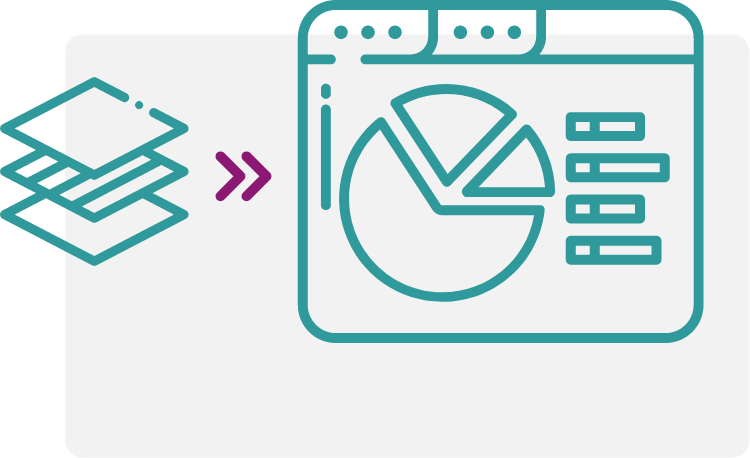SAP MM stands for SAP Materials Management and supports the processes of materials management including procurement.
SAP MM: THE TOPICS
- Three Common Questions
- Significance of Materials Management
- Top 10 Objectives of Materials Management
- SAP MM Components
- Procurement Process with SAP MM
- Purchase Requisition, Purchase Order & Co: Key Data in SAP MM
- SAP MM Transactions
- Integration of SAP Materials Management with other SAP Modules
- Key Changes in SAP Procurement with the Introduction of S/4HANA
- Strengths and Weaknesses of SAP ERP Utilization in Procurement
- 7 Compelling Reasons Why BeNeering is an Ideal Supplement to SAP MM


THREE COMMON QUESTIONS
2. WHAT IS SAP MM?
SAP MM is the standard module of SAP’s ERP software utilized by businesses to digitize their procurement processes within SAP. Simultaneously, it can be used to support additional processes in materials management, such as service procurement and inventory management.
3. WHY SAP MM?
If your company has opted for SAP as its ERP system, then utilizing SAP MM, at least for procurement, is generally advisable. The significant advantage lies in its integration with other modules such as finance and controlling. This avoids isolated solutions and achieves efficiency enhancements.
SIGNIFICANCE OF MATERIALS MANAGEMENT
Materials management plays a crucial role in a company and encompasses the entire flow of goods, from procurement through internal storage to the sale of goods. Here are some points highlighting the significance of materials management in a company:
- Optimization of the flow of goods: Materials management focuses on optimizing the entire flow of goods within a company. This includes procurement, internal provisioning and storage of materials, and distribution.
- Efficiency and productivity: Strategic procurement, efficient inventory management, and process optimization and automation can enhance a company’s efficiency and productivity.
- Cost control: Materials management helps control and minimize costs associated with procurement, storage, and distribution. Quality and service: The quality of products and the level of service depend on a well-designed materials management system.
- Social responsibility: A company must fulfill its social responsibility to be accepted. This can be achieved through environmentally friendly practices in materials management.
In summary, materials management is a crucial factor in optimizing company profits. It contributes to value creation and is a critical success factor for businesses.
TOP 10 OBJECTIVES OF MATERIALS MANAGEMENT
Materials management pursues several objectives to increase the efficiency and productivity of a company.
The top 10 objectives of materials management are:
- Maintaining delivery readiness: Ensuring that products can be delivered to customers on time and in the correct quantity.
- Satisfying material requirements: Always providing enough material for production or service delivery.
- Optimizing inventory levels: Maintaining materials in optimal quantities.
- Minimizing transportation costs: Minimizing transportation costs through efficient logistics and supply chain management.
- Reducing internal transportation routes: Minimizing internal transportation routes through optimal inventory management and production planning.
- Eliminating intermediate storage: Eliminating the need for intermediate storage through efficient planning and coordination.
- Conducting economic disposal: Minimizing disposal costs and reducing environmental impacts through efficient waste management.
- Adhering to recycling standards: Improving sustainability and minimizing environmental impacts by adhering to recycling standards.
- Optimizing environmental protection: Improving environmental protection through environmentally friendly practices in materials management.
- Profit optimization: Achieving profit optimization for the company through all of these measures.
SAP MM COMPONENTS
The following list provides an overview of the components or sub-modules of SAP MM along with their tasks and benefits.
1. PROCUREMENT (MM-PUR)
- Supports the external procurement of materials and services
- Facilitates the identification of possible sources of supply for a requirement
- Monitors goods deliveries and their payment
- Offers benefits such as real-time inventory management, centralization of procurement processes, and optimized and transparent order processing
(PUR: Purchasing)
2. MASTER DATA (MM-MD)
- Enables the maintenance of master data
- Supports the management of basic processes in materials management
- Facilitates the transparent mapping of your demand planning and procurement processes
(MD: Master Data)
3. INVENTORY MANAGEMENT (MM-IM)
- Provides quantitative and value-based management of material stocks, as well as planning, recording, and tracking of all goods movements.
- Offers benefits such as minimizing inventory losses through the removal of surplus materials and increasing efficiency through automated material management.
(IM: Inventory Management)
4. SERVICES PROCUREMENT (MM-SRV)
- The services and services procurement component supports the entire cycle from tendering, awarding, and acceptance of services to invoice verification.
(SRV: Service)
5. LOGISTICS INVOICE VERIFICATION (MM-IV)
- The logistics invoice verification component enables the verification of incoming invoices for accuracy in terms of goods received, pricing, and calculations.
(IV: Invoice Verification)
6. INVOICE MANAGEMENT (MM-INV)
- Facilitates the billing of supplier invoices (incoming invoices)
- Supports rapid data transmission
- Prevents input errors during manual invoice entry
(INV: Invoice)
ChatGPT INTEGRATION OF SAP MATERIALS MANAGEMENT WITH OTHER MODULES
SAP MM (Materialwirtschaft) ist eines der bedeutsamsten Module von SAP und verfügt über eine enge Integration mit anderen Modulen wie PP (Produktionsplanung), PM (Instandhaltung), PS (Projektsystem), CO (Controlling), FI (Finanzbuchhaltung) und SD (Vertrieb). Diese Integration ermöglicht eine reibungslose Abwicklung von Geschäftsprozessen durch die zentrale Verfügbarkeit aller notwendigen Informationen in SAP.
1. SAP PP (PRODUCTION PLANNING AND CONTROL)
The close integration of SAP Materials Management with the PP module ensures:
- Data Integration: SAP PP utilizes data from the SAP MM module for production planning. For example, a production planner uses SAP PP to plan production, accessing material data from SAP MM to verify material availability.
- Material Flow: SAP MM and SAP PP collaborate to control material flow in production. For instance, when materials are required for production, SAP PP can automatically trigger a material requisition in SAP MM.
- Efficiency: The integration of SAP MM and SAP PP enables efficient production planning and control. Transparency: Integration enhances transparency regarding material flow and production planning.
- Optimization: The ability to automatically generate material requisitions when materials are needed for production optimizes the production process.
2. SAP PM (PLANT MAINTENANCE)
The close integration of MM with PM provides:
- Material Reservation: Through integration between SAP MM and SAP PM, materials needed for maintenance tasks can be directly selected from the warehouse.
- Automated Procurement: If the required material is not available in the warehouse, the system can automatically generate a purchase requisition. For example, a maintenance technician creates a maintenance order in SAP PM and selects the required materials from the warehouse. If the material is not available, the system automatically generates a purchase requisition in SAP MM.
- Transparency: Integration enhances transparency regarding material consumption and the costs of maintenance activities.
3. SAP PS (PROJECT SYSTEM)
The integration of SAP Project System with SAP Materials Management is characterized by:
- Data Integration: SAP PS utilizes data from the SAP MM module for project planning and control. For example, a project manager uses SAP PS to plan a project, accessing material data from SAP MM to verify material availability.
- Material Flow: SAP MM and SAP PS collaborate to control material flow in projects. For instance, when materials are needed for a project, SAP PS can automatically generate requirements in SAP MM.
- Efficiency: The integration of SAP MM and SAP PS enables efficient project planning and control.
- Transparency: Integration enhances transparency regarding material flow and project planning and execution.
- Optimization: The ability to automatically generate material requirements when materials are needed for a project optimizes project execution.
4. SAP SD (SALES AND DISTRIBUTION)
This integration offers the following advantages:
- Data Integration: SAP SD utilizes data from the SAP MM module for organizing all sales activities. For example, a sales representative uses SAP SD to manage the sale of products and services to business partners, from the initial inquiry through the quotation to the delivery and invoicing process. In this process, they access material data from SAP MM to check material availability.
- Material Flow: SAP MM and SAP SD collaborate to control material flow in sales processes. For instance, when materials are needed for sales, SAP SD can automatically trigger a reservation or purchase requisition in SAP MM.
- Efficiency: The integration of SAP MM and SAP SD enables efficient organization of all sales activities.
- Transparency: Integration enhances transparency regarding material flow and sales processes.
- Optimization: The ability to automatically create reservations and purchase requisitions when materials are needed for sales optimizes the sales process.
5. SAP CO (Controlling)
SAP CO supports the internal accounting of a company and covers cost and performance accounting. It enables detailed cost control and performance analysis, contributing to the optimization of business processes.
SAP CO is closely integrated with SAP MM, enabling efficient cost control and performance analysis regarding materials management.
6. SAP FI (FINANCIAL ACCOUNTING)
SAP FI represents the external accounting of a company, depicting the financial situation of the company to external parties. This module enables precise monitoring of all aspects of a company’s finances.
SAP FI is closely integrated with SAP MM, facilitating efficient financial control and analysis regarding materials management.
KEY CHANGES IN SAP PROCUREMENT WITH THE INTRODUCTION OF S/4HANA
With the introduction of SAP S/4HANA, the procurement of materials and services will become easier, faster, and more user-friendly in the future.
KEY CHANGES OVERVIEW:
New User-Friendliness with Fiori Apps & Launchpad
Increased Transparency of SAP ERP Data with Fiori Procurement Analytics
Holistic View of all Workflow Items with Fiori Inbox for Mobile Workflow Processing
Avoidance of Redundant Data with Business Partner (Elimination of MK* Transactions)
More Flexible Message Determination and Support for Smart Forms and Adobe Forms
Faster Evaluation and Reporting in Inventory Management by replacing numerous previously used tables with the MATDOC table. Previous tables can still be displayed.
Time Savings through the new material type SERV as an alternative to using service master data. The new material type contains fewer views and fields, allowing for quicker data entry.
Lean Standard Process “Lean Services” for simplified service processing
Quick Finding of Specific Information within the application with cross-application search functionality
You need more information on SAP S/4HANA Sourcing & Procurement?
STRENGTHS AND WEAKNESSES OF USING SAP ERP IN PROCUREMENT
7 GOOD REASONS WHY BENEERING IS AN IDEAL COMPLEMENT TO SAP MM
BeNeering and SAP MM complement each other perfectly, as they offer a range of advantages when used together. Here are seven reasons why they work well together:
- Integration with SAP: BeNeering is seamlessly integrated in real-time with SAP ERP & S/4HANA.
- Support for all Procurement Channels: BeNeering supports all procurement channels.
- Compliance: BeNeering’s hybrid cloud architecture ensures compliance.
- Guided Buying: BeNeering guides employees through the purchasing process, including through intelligent search.
- Usability: BeNeering’s hybrid cloud enables unprecedented user-friendliness.
- Dynamic Forms: BeNeering’s dynamic forms guide users through various customer-specific processes.
- Simple Sourcing: BeNeering enables intuitive collaboration between requesters, buyers, and suppliers.
This combination allows companies to efficiently digitize and optimize their procurement processes. Perhaps yours too?

